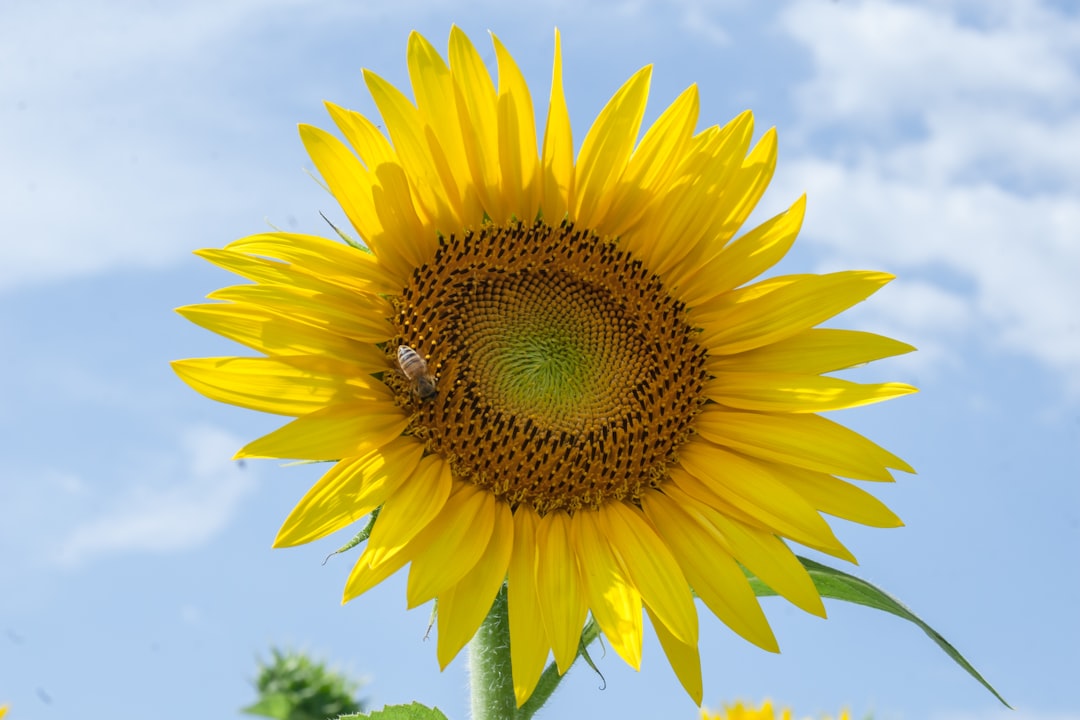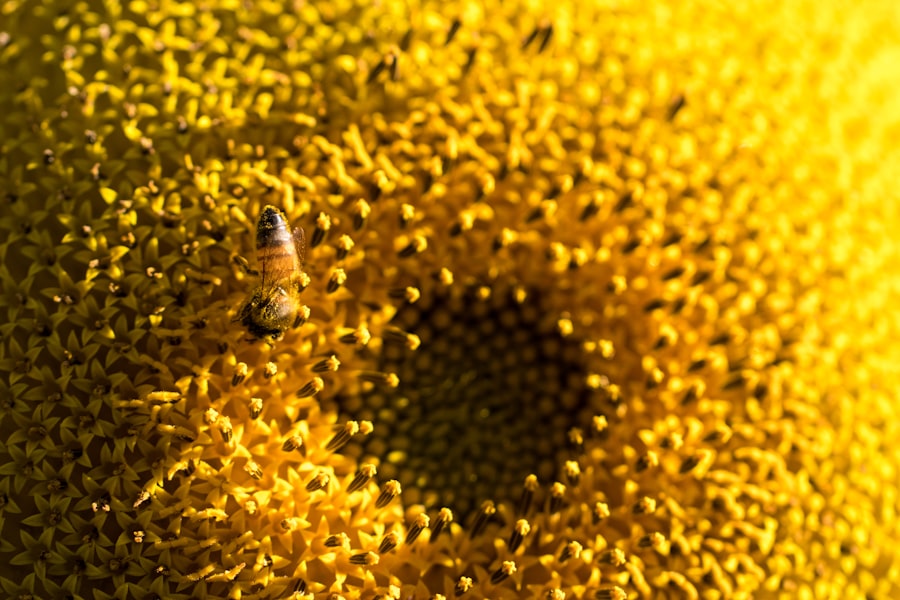Growing Sunflowers: Tips for Starting from Seed

Sunflowers are not only beautiful to look at, but they also offer a wide range of benefits for gardeners. From their vibrant colors to their ability to attract pollinators, sunflowers are a versatile and rewarding addition to any garden. Whether you have a large plot of land or just a small balcony, growing sunflowers can bring joy and beauty to your outdoor space. In this article, we will explore the many benefits of growing sunflowers, as well as provide tips and techniques for successful cultivation.
The Benefits of Growing Sunflowers
One of the most obvious benefits of growing sunflowers is their sheer beauty. With their tall stalks and large, vibrant flowers, sunflowers are a striking addition to any garden. They come in a variety of colors, including yellow, orange, and even red, allowing you to create a visually stunning display. Sunflowers also have a long blooming period, providing weeks of enjoyment as you watch them grow and change.
In addition to their beauty, sunflowers are also incredibly versatile. They can be used in a variety of ways, from providing shade and privacy to acting as a natural trellis for climbing plants. Sunflowers can also be harvested for their seeds, which can be used in cooking or saved for next year’s planting. This versatility makes sunflowers a valuable asset in any garden.
Another benefit of growing sunflowers is their ability to attract pollinators. Bees, butterflies, and other beneficial insects are drawn to the bright colors and abundant nectar of sunflowers. By planting sunflowers in your garden, you can help support these important pollinators and promote biodiversity in your area.
Choosing the Right Sunflower Seeds
When it comes to choosing sunflower seeds for your garden, there are a few factors to consider. First and foremost, you’ll want to select seeds that are well-suited to your climate and growing conditions. Some sunflower varieties are more heat-tolerant, while others are better suited to cooler climates. Research the different varieties available and choose ones that are best suited to your specific needs.
Size and color are also important considerations when selecting sunflower seeds. Sunflowers come in a range of sizes, from dwarf varieties that grow only a few feet tall to giant varieties that can reach heights of 12 feet or more. Consider the space you have available in your garden and choose a size that will fit well. Similarly, think about the color scheme of your garden and select sunflowers that will complement or contrast with the other plants in your space.
Finally, consider the growth habits of the sunflower variety you choose. Some sunflowers have single stems, while others have branching habits. If you plan to use sunflowers as a natural trellis or support for other plants, you may want to choose a variety with branching habits. On the other hand, if you want to grow sunflowers for their large, showy blooms, a single-stemmed variety may be more suitable.
Preparing the Soil for Sunflower Planting
| Soil Preparation Metric | Measurement |
|---|---|
| Soil pH | 6.0-7.5 |
| Soil Temperature | 60-70°F |
| Soil Moisture | Moist, but not waterlogged |
| Soil Texture | Loamy |
| Soil Fertility | High in nitrogen and phosphorus |
| Weed Control | Remove all weeds before planting |
| Tillage | Deep tillage to break up soil compaction |
Before planting sunflower seeds, it’s important to prepare the soil properly. Sunflowers prefer well-drained soil that is rich in organic matter. Start by testing your soil to determine its pH level and nutrient content. This will help you determine if any amendments are needed.
If your soil is too acidic, you can add lime to raise the pH level. If it is too alkaline, you can add sulfur or peat moss to lower the pH level. Additionally, adding compost or well-rotted manure to the soil will help improve its fertility and structure.
Once you have amended the soil, it’s time to till it to a depth of about 6-8 inches. This will help break up any compacted soil and create a loose, friable bed for your sunflower seeds. Remove any rocks, weeds, or other debris from the soil as you till.
Planting Sunflower Seeds: Best Practices
When it comes to planting sunflower seeds, there are a few best practices to keep in mind. First, make sure to choose a sunny location for your sunflowers. They need at least 6-8 hours of direct sunlight per day to thrive.
Next, consider the spacing and depth at which you plant your sunflower seeds. Sunflowers should be spaced about 1-2 feet apart, depending on the variety. Dig a hole that is about twice as deep as the seed and place the seed in the hole. Cover it with soil and gently firm it down.
Timing is also important when planting sunflower seeds. In most regions, it is best to plant sunflowers after the last frost date in spring. This will ensure that the soil has warmed up enough for germination to occur. If you live in a warmer climate, you may be able to plant sunflowers earlier in the year.
Watering and Fertilizing Sunflowers

Proper watering and fertilizing are essential for the healthy growth of sunflowers. Sunflowers have deep taproots that allow them to access water from deeper in the soil, but they still require regular watering, especially during dry periods.
Water your sunflowers deeply once or twice a week, providing enough water to moisten the soil to a depth of 6-8 inches. Avoid overwatering, as this can lead to root rot and other problems. Mulching around the base of the plants can help conserve moisture and reduce weed competition.
In terms of fertilizing, sunflowers are relatively low-maintenance plants that don’t require heavy feeding. However, they will benefit from a balanced fertilizer applied at planting time. Use a slow-release granular fertilizer or a liquid fertilizer diluted according to the package instructions. Apply the fertilizer according to the recommended rates, being careful not to over-fertilize, as this can lead to excessive vegetative growth and weak stems.
Sunflower Care: Pruning and Staking
As your sunflowers grow, you may need to provide some care and maintenance to ensure their health and stability. One important aspect of sunflower care is pruning. Pruning can help promote air circulation and reduce the risk of disease. It can also help prevent the plants from becoming top-heavy and falling over.
To prune sunflowers, remove any dead or damaged leaves or flowers. You can also remove any side shoots or branches that are competing for resources with the main stem. Be careful not to remove too much foliage, as this can reduce the plant’s ability to photosynthesize and produce energy.
Staking is another important aspect of sunflower care, especially for taller varieties. As sunflowers grow, their stems can become top-heavy and prone to bending or breaking. To prevent this, you can stake the plants using bamboo stakes or other supports. Place the stakes in the ground near the base of the plant and gently tie the stem to the stake using soft twine or plant ties. This will help provide support and stability as the plant grows.
Common Sunflower Pests and Diseases to Watch Out For
While sunflowers are generally hardy plants, they can still be susceptible to certain pests and diseases. Some common pests that can affect sunflowers include aphids, slugs, snails, and caterpillars. These pests can cause damage by feeding on the leaves, stems, or flowers of the plants.
To prevent pest infestations, it’s important to keep your garden clean and free of debris. Remove any dead or decaying plant material that could attract pests. You can also use organic pest control methods such as handpicking or spraying with insecticidal soap.
In terms of diseases, sunflowers can be susceptible to fungal infections such as powdery mildew and downy mildew. These diseases can cause white or gray powdery patches on the leaves, stems, or flowers of the plants. To prevent fungal infections, make sure to provide adequate air circulation by spacing your sunflowers properly and avoiding overcrowding. Water the plants at the base rather than overhead to prevent moisture from sitting on the leaves.
Harvesting Sunflowers: When and How to Do It
Knowing when and how to harvest sunflowers is important to ensure that you get the most out of your plants. Sunflowers are typically ready for harvest when the back of the flower head turns yellow or brown and the seeds are plump and firm. The petals may have fallen off or started to wilt.
To harvest sunflowers, use a sharp pair of garden shears or scissors to cut the stem about 12-18 inches below the flower head. Leave a few inches of stem attached to the flower head to make it easier to handle. Hang the flower heads upside down in a cool, dry place to dry. Once the seeds are fully dry, you can remove them from the flower head by rubbing them gently with your hands or using a fork.
Saving Sunflower Seeds for Next Year
Saving sunflower seeds is a great way to ensure that you have a fresh supply of seeds for next year’s planting. To save sunflower seeds, start by selecting healthy, mature flower heads with fully developed seeds. Cut the flower heads from the plants and hang them upside down in a cool, dry place to dry.
Once the flower heads are fully dry, remove them from the plants and gently rub them between your hands to release the seeds. Separate the seeds from any remaining plant material and store them in a cool, dry place in an airtight container. Be sure to label the container with the variety and date of harvest.
Creative Ways to Use Sunflowers in Your Garden and Home
Sunflowers are not only beautiful in the garden, but they can also be used in a variety of creative ways. One popular way to use sunflowers is to create stunning bouquets. Cut sunflowers at different stages of maturity and arrange them in a vase for a vibrant and cheerful display. You can also mix sunflowers with other flowers and foliage for a more varied arrangement.
Another creative use for sunflowers is in cooking. Sunflower seeds can be used in a variety of dishes, from salads and stir-fries to baked goods and granola. They can be eaten raw or roasted for added flavor. Sunflower petals can also be used as a garnish or added to salads for a pop of color.
In addition to using sunflowers in the garden and kitchen, you can also incorporate them into your home decor. Dried sunflower heads can be used in wreaths, garlands, or other craft projects. You can also press sunflower petals between the pages of a book to preserve their beauty.
In conclusion, growing sunflowers offers a wide range of benefits for gardeners. From their beauty and versatility to their ability to attract pollinators, sunflowers are a valuable addition to any garden. By following the tips and techniques outlined in this article, you can successfully grow sunflowers and enjoy their many rewards. So why not give it a try and plant some sunflowers in your own garden? You won’t be disappointed!



